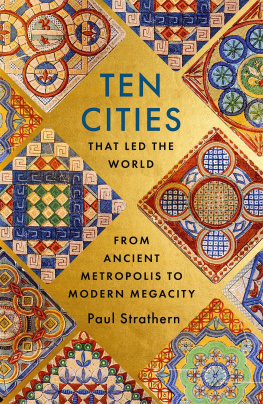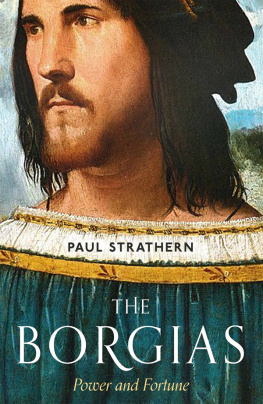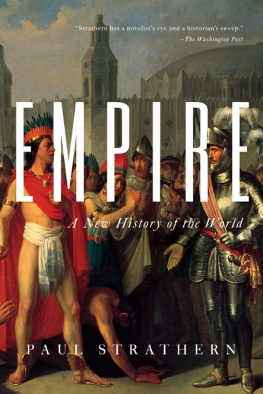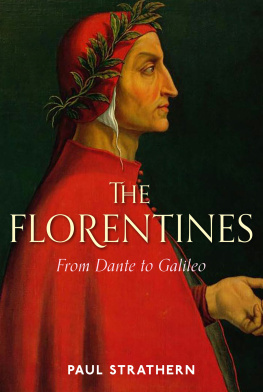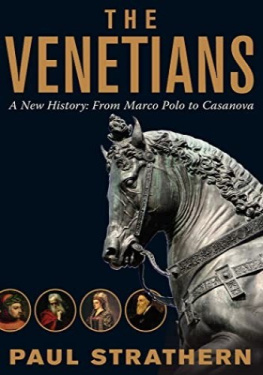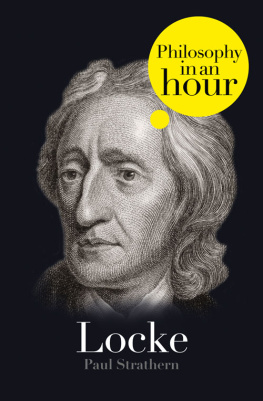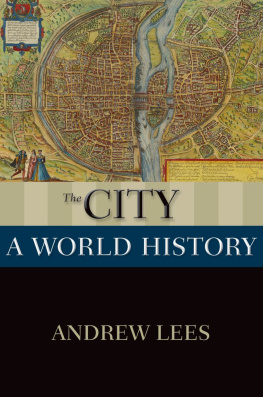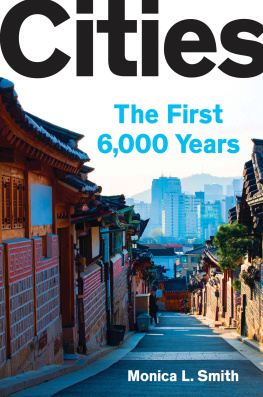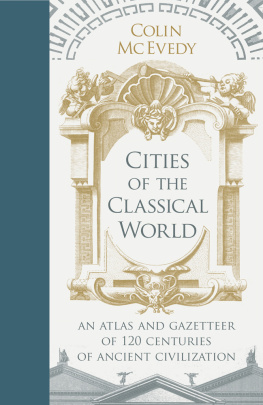Contents
About the Author
Paul Strathern is the author of numerous books about science, history, philosophy and literature, including two series, Philosophers in 90 Minutes and The Big Idea: Scientists Who Changed the World, and the Sunday Times bestseller The Medici: Godfathers of the Renaissance.
He also won a Somerset Maugham award for his novel A Season in Abyssinia. He formerly lectured in philosophy and mathematics at Kingston University. He lives in London.
Ten Cities that Led the World
From Ancient Metropolis to Modern Megacity
Paul Strathern

www.hodder.co.uk
First published in Great Britain in 2022 by Hodder & Stoughton
An Hachette UK company
Copyright Paul Strathern 2022
The right of Paul Strathern to be identified as the Author of the Work has been asserted by him in accordance with the Copyright, Designs and Patents Act 1988.
All rights reserved. No part of this publication may be reproduced, stored in a retrieval system, or transmitted, in any form or by any means without the prior written permission of the publisher, nor be otherwise circulated in any form of binding or cover other than that in which it is published and without a similar condition being imposed on the subsequent purchaser.
A CIP catalogue record for this title is available from the British Library
Hardback ISBN 9781529356342
Trade Paperback ISBN 9781529356434
eBook ISBN 9781529356458
Hodder & Stoughton Ltd
Carmelite House
50 Victoria Embankment
London EC4Y 0DZ
www.hodder.co.uk
To Matthias
wer die Zukunft erforschte
while I thought about the past
Vienna Lockdown 2020
Contents
Prologue
What Survives
Cities come and go, some destroyed by humanity, others by nature, others simply abandoned. Several decades ago, I happened upon an example of the last kind, in India. The red-stone city was deserted, its wide, empty, paved streets extending into the distance towards the fortified walls. The branches of trees burst from the sides of some of its buildings. The interiors of its domed temples, pillared palaces and long colonnades were dark and silent. The only visible signs of life were the monkeys, which scampered away as you approached, running up the steps of a temple, along the tops of the ornate walls. The city of Fatehpur Sikri, which had once been capital of the Mogul Empire, was now an abandoned, gradually crumbling ruin.
According to legend, more than four centuries previously the Moghul Emperor Akhbar, whose rule extended across the north Indian subcontinent from Bengal to Afghanistan and Central Asia, was travelling through the countryside with his entourage. Here he encountered a holy man sitting beneath the shade of a tree. The holy man asked him, What is it you desire, oh mighty emperor? The emperor replied: It is a great sadness to me that my wife and I have no children. Above all things on earth I would wish my wife to give birth to a son, who can one day succeed me as emperor. The holy man answered him: Your wish will be granted. You will have a son.
The following year the emperors wife gave birth to a son. Emperor Akhbar was so overjoyed that he returned to the very spot where he had encountered the holy man, declaring: Here I will build my new capital city. Some time later, the Emperor Akhbar, his wife and son, as well as his court and all his administration, took up residence amid the splendours of his newly built city, to which he attached the name Sikri, meaning thanks.
Just over a decade later Fatehpur Sikri had drained all available water from the surrounding countryside, and Akhbar was forced to abandon his imperial city, leaving it deserted, much as I saw it over four centuries later when I first walked through the large, intricately carved, monumental gateway.
The greatest cities of all time have changed the world. At their peak they literally make history. However, after such superhuman effort, their influence wanes. Some fall back upon themselves. Others may continue to thrive, but in a supporting role, rather than as the leading actor in the unfolding drama of events.
In this book we shall see how Athens produced a template for the future western world; how Rome established the power and organisation to carry forth these ideas; and how, centuries later, Paris would produce the ideas of the Enlightenment, which would in time inform both the constitution of the United States and the practice of communism. From the past to the future, we shall see how the modern megacities of Mumbai and Beijing embody not only the future of our cities, but of our whole world. They are our future, in two different versions. The freely evolving wonders and chaos of democratic Mumbai, and the directed economic supergrowth of communist Beijing, which views democracy as an obstacle. These cities of the future are stuffed with humanity, bursting at the seams. Yet the future may also have room for emptiness. Water diverted to the ill-advised cotton plantations of the Soviet era resulted in the emptying of the entire Aral Sea, once the fourth-largest lake in the world. Climate change will doubtless bequeath us with similar voids: vanished seas, vanished cities
Empty cities are not an ancient phenomenon, like Fatehpur Sikri. Indeed, nowadays we are experiencing the entirely new phenomenon of empty cities that have never had any inhabitants at all. Some years ago, I visited the city of Cartagena, on the Caribbean coast of Colombia. I was surprised to find that across the bay, beyond the hillside shanty towns, and far from the four-hundred-year-old picturesque streets of the old town, was a spectacular skyline consisting of mile upon mile of white skyscrapers receding like a mirage beneath the blue Caribbean sky. A few were luxury hotels, but most of these ultra-modern buildings appeared to be empty.
A few days later I arrived at Panama City, to be greeted by the sight of a similar functioning old city, far-off shanty towns, and an almost identical skyline of spectacular white skyscrapers stretching into the distance along the shore. Apparently, until recently the ground now occupied by these pristine buildings had been empty sand dunes. In 2005 the United States tax authorities had begun pressurising Swiss banks to reveal the identities behind certain numbered bank accounts. Not long afterwards, Cartagena and Panama City experienced a building boom. The skyscraper district in Panama City was confidently expected to house nine out of ten of Latin Americas tallest buildings, according to Andrew Beatty of Business News. These immaculate architectural edifices were nothing less than monuments to laundered cash, hiding in plain sight, owned by Russian dolls of offshore shell companies far beyond the reach of any tax, or judicial, jurisdiction.
Other ghost cities have sprung up in the modern world too. As China rose to global power status during the early decades of this century, megacities began mushrooming all over the country. New cities, capable of housing populations of up to a million or more, were built to drive the new economic powerhouse. These were part of the miraculous transformation of the worlds most populous nation, a commercial enterprise on a scale hitherto unknown in human history. Today many of these megacities, their names all but unknown in the West, are producing a flood of low-priced goods and technology that China ships to every corner of the globe.

